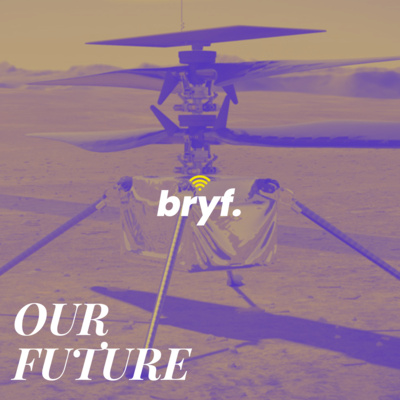Beyond Earth: The Rise of Aerial Robots in Space Exploration | OUR FUTURE
Description
Beyond Earth: The Rise of Aerial Robots in Space Exploration | OUR FUTURE
[AUDIO TRANSCRIPTION]
Welcome to Bryf, your go-to source for breaking news, analysis, and commentary from around the world. I'm Kyla and today we're discussing the groundbreaking achievement of NASA's Mars Helicopter, Ingenuity, and the exciting possibilities for flight on other worlds.
On April 19th, 2021, Ingenuity made history by becoming the first craft to perform a powered flight on a world beyond Earth. The toaster oven-size helicopter rose 10 feet above the surface of Mars, and it won't be the last. NASA and other space agencies are already developing three more extraterrestrial fliers, and many more aerial robots are on the drawing board.
These aerial robots could survey the clouds of Venus, search for life on Saturn's moon Titan, and scout out resources for Mars astronauts who may arrive in the late 2030s. However, these missions face significant technological hurdles. Flying on other worlds requires ultra-lightweight materials, autonomous navigation, and adaptations to extreme temperatures and different atmospheres.
But if engineers at NASA's Jet Propulsion Laboratory in Pasadena, California can pull it off, we will soon be touring the solar system like never before. Geoff Landis, a physicist at NASA's John Glenn Research Center in Cleveland, explains that there are so many things you can do with aerial mobility that you can't do with a lander or a rover. "If you want to do global exploration, from pole to equator, you need something capable of flying."
Ingenuity has shattered expectations of what a helicopter can achieve on other planets. Originally conceived as a low-budget technology demonstration and scheduled to make just five flights, the tiny craft has taken to the Martian skies dozens of times. It has provided unprecedented aerial views of the Red Planet's surface and supported NASA's nearby Perseverance rover.
Ingenuity's success has led NASA to change its plans for future missions. The agency no longer plans to send a European Space Agency rover to Mars to transport soil samples cached by Perseverance so that they can be returned to Earth for analysis. Instead, NASA plans to launch a pair of new Ingenuity-style fliers in 2028, each enhanced with four wheels and a grasping arm to help collect the samples.
Engineers at NASA's Jet Propulsion Laboratory, Ames Research Center, and AeroVironment Inc. have also drawn up a concept for a larger copter with six rotors instead of Ingenuity's two. The Mars Science Helicopter, as it's known, would be able to carry up to about 10 pounds of instruments.
One of the most ambitious projects in development is Dragonfly, a nuclear-powered helicopter being developed at Johns Hopkins University's Applied Physics Lab in Laurel, Maryland. In 2027, NASA plans to launch Dragonfly toward Titan, where the atmosphere is four times as dense and the gravity about one-seventh Earth's. Under those conditions, a modest nudge from Dragonfly's eight rotors should be enough to send the half-ton science lab soaring through the sky.
The Dragonfly mission's principal investigator, Elizabeth "Zibi" Turtle, a planetary scientist at APL, says that Titan is calling out to be flown on. The plans call for Dragonfly to take to the air once a month for nearly three years, logging up to 10 miles per flight, to explore a landscape dotted with liquid methane lakes, ice boulders, and dunes made of grains of tar.
So there you have it, folks! Thank you for tuning in to Bryf, stay with us for more unbiased, up-to-the-minute coverage of the stories that matter most. We'll catch you next time!
[END]
Don't miss a beat of the latest global events! Stay tuned with Bryf, your go-to source for unbiased, up-to-the-minute coverage of the stories that matter most.
















